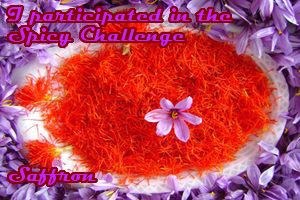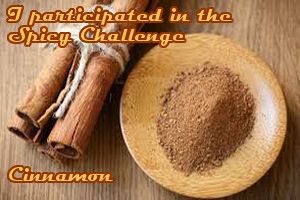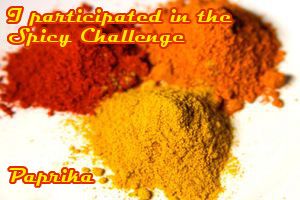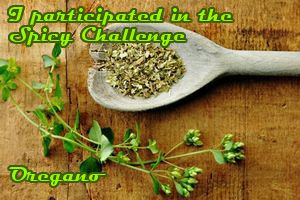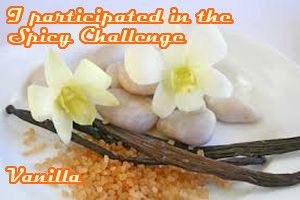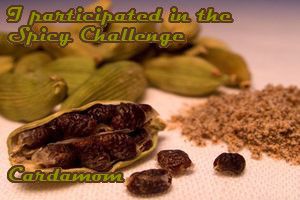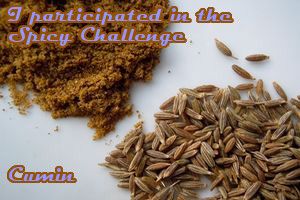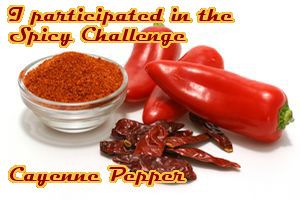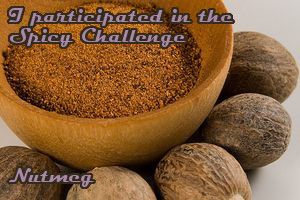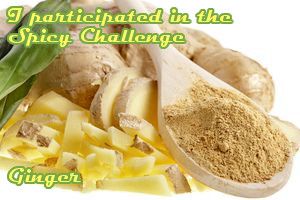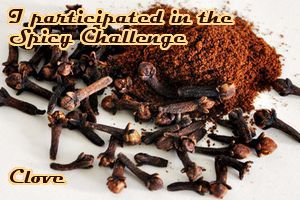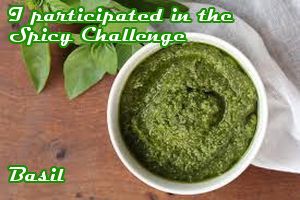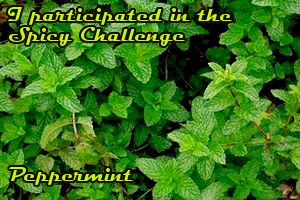Mizui wrote:
Would it be out of line for me to ask for the actual post about the challenge to be reposted?
I can't view the first page of a thread unless the posts have not gone beyond one page, so I don't know what this challenge is at all. I do know that I have seen quite a few entries for it that have caught my interest, and that I have some free time to do some writing, and that I'm hoping that I can work some challenges into my existing plot.
So if it isn't too much trouble is there a way for someone to repost the challenge?
I can't open a new thread, but I can repost the original challenge.
There is a Greek saying my grandmother used to say: “Love passes through the stomach.” She meant that if I wanted to draw a man’s attention, I should learn how to cook. I discovered later on that the opposite can also be true. Nothing more appealing than a man who knows his way around the kitchen. XD
Without further ado, I present to you the Spicy Challenge. I have provided some information around these spices and you can use them as you see fit. The rules are simple. It can be a new story or part of an ongoing one. There is no word count. It can be a chapter story, drabble, or oneshot. It can be of any rating, but don’t forget to mention if it will be
M or
MA here. There is no time limit. You can grab the banners as soon as you post the title and the link of your submission story here.
They can be used in whichever order you want. You don't have to use them all to participate - one is enough. Karma to those who complete all twenty of them. Happy writings!
Saffron
It’s among the most popular and valuable spices of the ancient civilizations, for its aroma, color, drugging agents and aphrodisiac qualities. It’s also known as “the flower of the Mediterranean cuisine”. With its bitter taste, hay-like fragrance, and slight metallic notes, it has been used as a seasoning, fragrance, dye, and medicine. Its radiant orange stigmas were held as a relict glow of an undying and unrequited passion. Cleopatra used a quarter-cup of saffron in her warm baths, as she prized its coloring and cosmetic properties. She used it before encounters with men, trusting that saffron would render lovemaking yet more pleasurable.
For the Greeks, saffron was widely associated with professional courtesans and retainers known as the hetaerae. Wealthy Romans partook of daily saffron baths. They used it as mascara, stirred saffron threads into their wines, cast it aloft in their halls and streets as a potpourri, and offered it to their deities. Saffron was used by ancient Persian worshipers as a ritual offering to their deities, and as a brilliant yellow dye, perfume, and a medicine. Thus, saffron threads would be scattered across beds and mixed into hot teas as a curative for bouts of melancholy. It has a slight orange-red color.
Cinnamon
The word 'Cinnamon' is derived from the ancient Hebrew word 'kinnämön, meaning 'sweet wood'. It was so highly prized among ancient nations that it was regarded as a gift fit for monarchs and even for a god. According to Herodotus, it grew together with incense, myrrh, and ladanum, and was guarded by winged serpents. In ancient Rome, it was burned during funerals. The ancient Egyptians used it in embalming mummies because of its pleasant odors and its preservative qualities. It is also said that when taken internally it will act as an anti-inflammatory and will stimulate menstruation.
Another study has shown that Cinnamon can have a beneficial effect on cognitive function. It is frequently mixed with honey and taken as tea, though the British found it more to their taste to add rum and lemon to the brew. It is also an essential ingredient of 'Chai', the Indian spice tea, which was long rumored to have aphrodisiac properties and helped to kindle passions, especially among the willing. It is of a golden-copper colour, with a very hot aromatic taste.
Paprika
At first, the plants were used to decorate baroque gardens of nobility in Europe. In Hungary, paprika was first used as a cure for intermittent fever. Its pungency ranges from sweet to mildly hot and very hot, depending of the type of pepper the powder was produced. Paprika may be smoked for additional flavor. Pálinka (brandy) is made from paprika. It is also known to be an excellent stimulant and energiser, which is particularly useful in poor circulation, tiredness, lethargy and depression. Paprika is used as a coloring agent in foods and cosmetics. Its inclusion in foods fed to zoo flamingos help them keep their pink plumage bright and beautiful. The colour of the spices varies from bright orange-red to deep blood-red.
Oregano
Oregano has a very long history of use in folklore. It has been used for culinary purposes, medicinal reasons, and was believed to hold magical properties as well. The word "oregano" is actually derived from the Greek phrase, "joy of the mountains". Just married couples were crowned with wreaths of it. In their mythology the goddess Aphrodite invented the spice. Giving it to man to make his life happier. They also believed that oregano was a useful poison antidote. It is said to encourage good luck and good health and is used in spells for happiness, tranquility, luck, health, protection and letting go of a loved one.
It is believed that when worn on the head during sleep, it will promote psychic dreams. It has also been used in love potions and rituals.. It is mostly used to spice meats, fish, and even as a flavoring for wine. Later, the English found a use for oregano as an additive to snuff, which was generally a tobacco concoction taken through the nose. It was also used as a perfume in sachets. It has an aromatic, warm and slightly bitter taste, which can vary in intensity. Good quality oregano may be strong enough almost to numb the tongue. Fresh oregano has a pale green color.
Vanilla
Vanilla has a remarkable story, filled with history, intrigue, passion, and piracy. The word vanilla, derived from the diminutive of the Spanish word vaina, meaning sheath. Vanilla flavors our foods, beverages, and even our favorite chocolate bar. It's the secret ingredient that makes a lot of medicines go down more easily and it is in most bottles of perfume. Last but most certainly not least vanilla helps to lift spirits, soothe jangled nerves, calms you down, makes you feel good, and can even help you lose weight.
According to Totonaca mythology, the tropical orchid was born when Princess Xanat, forbidden by her father from marrying a mortal, fled to the forest with her lover. The lovers were captured and beheaded. Where their blood touched the ground, the vine of the tropical orchid grew. The Aztecs combined vanilla beans with cacao to make an unusual and pleasing drink. Madagascar Bourbon vanilla beans are considered to be the highest quality pure vanilla available, described as having a creamy, sweet, smooth, mellow flavor. Tahitian vanilla beans, grown from a different genus of vanilla orchid, is flowery and fruity, anisic and smooth.
Anise
In Biblical times, anise was so highly prized that it was often used for tithes, offerings and payment of taxes. The tradition of wedding cake stems from the early use of spiced cake made with aniseed at the end of a Roman marriage feast. The Roman scholar Pliny suggested using this herb to get rid of morning breath, and he also thought keeping anise by the bed at night would help rid the sleeper of bad dreams. Anise has many medicinal uses. The most well known use was for aiding in digestion and flatulence, and it was often taken as a tea or baked into cookies or cakes. This tea has a pleasant taste and can help with stomach and intestinal problems.
Anise is also used to help alleviate coughs, and it can be found in natural cough syrups. It is one of the herbs that was supposed to avert the Evil Eye. The oil extracted from the seed is said to prove a capital bait for mice, if smeared on traps. It is poisonous to pigeons. The taste is sweet and spicy, and the odour aromatic and agreeable. Anise is also used to flavor spirits such as Absinthe or more commonly known “The Green Fairy”. The liqueur Anisette added to cold water on a hot summer's day, makes a most refreshing drink.
Cardamom
Cardamom is also known as ‘Grains of Paradise’. It was known as the Queen of Spices, with black pepper being the King. Cardamom is also mentioned in Sanskrit texts of the 4th century BC in a treatise on politics called Kautilya's Arthashasthra and in Taitirriya Samhita where it is used in offerings during ceremonies. Spices were the symbols of royalty and luxury and cardamom was used in the manufacture of perfumes during the Greek and Roman times. When combined with Ylang ylang, cardamom makes a highly beneficial oil for alleviating or reducing feelings of depression or self worthlessness.
Cardamom has traditionally been used for its aphrodisiac, digestive, carminative and flavoring properties. It can also have a rejuvenating effect on those who feel exhausted by the challenges of life or support altering a perception that ‘life is difficult’.Its flavor is warm, pungent and slightly lemony with low notes of sweetness. It is used as a spice, a masticatory, and in medicine; it is also smoked sometimes. Cardamom has a strong, unique taste, with an intensely aromatic, resinous fragrance. Black cardamom has a distinctly more smoky, though not bitter, aroma, with a coolness some consider similar to mint.
Cumin
The ancient Egyptians used it as a spice in foods as well as in the mummification process. The Greeks and Romans used cumin as a spice and also applied it for medicinal purposes. Interestingly, it was used to make the complexion more pale. Pliny was said to have listed cumin as "the best appetizer of all condiments." He also suggested that smoking the seeds would cultivate a scholarly pallor that implied long hours of scholarly pursuits. It was thought to promote love and fidelity. Cumin was thought to "confer the gift of retention" or faithfulness. This concept of retention extended to objects, birds and people.
It was thought any object containing cumin would be protected from theft as that object would hold the power of entrapping anyone attempting to steal that item within the invaded house. People carried it to weddings and walked around with it with their pockets. It was reputed to keep lovers and chickens from wandering. Thus, married soldiers were sent off to battle with a fresh baked loaf of cumin bread. Folklore of plants linked cumin to the wood and forest folks of Germany, spirits inhabiting the forests. In other words, common folk would not have eaten cumin for fear of those spirits. Cumin had such a powerful medicinal value that it could be used as money. An aromatic spice with a distinctive bitter flavor and strong, warm aroma due to its abundant oil content.
Coriander
The British mixed coriander with cumin and vinegar and used to preserve meat. Thought to be an aphrodisiac, coriander was added to love potions during the medieval and Renaissance periods. Robert Turner would appear to agree with this assesment and said that when consumed with wine, coriander "stimulates the animal passions." Dioscorides, a Greek physician and author of several renowned books on the medicinal qualities of herbs, believed ingesting coriander spice could heighten a man's sexual potency. And, the Chinese believe that those who consume coriander seeds will be rewarded with immortality.
It was the unpleasant smell of coriander that led to its use as a medicine. The ancients believed that anything with such a strong and unpleasant odor must surely possess powerful curative and/or preventive attributes. Coriander seeds can have a narcotic effect when consumed in quantity which is perhaps how it became to be known as 'dizzycorn'. It is supposed to reduce flatulence also good for increasing the appetite. The seed can be used externally as a poultice and is thought to relieve rheumatism and painful joints. The seeds have a lemony citrus flavor when crushed. It is described as warm, nutty, spicy, and orange-flavored.
Cayenne Pepper
Capsicum also known as cayenne pepper has been known to the natives of the tropical Americas for thousands of years. The mixture of chocolate and red chilies was a taste treat that was reserved exclusively for Aztec royalty. Although, the exact origin of the word Capsicum is somewhat a mystery, it is assumed to be derived from the Greek word kapto, which means ‘to bite’ or ‘to swallow’. It can add zest to virtually any dish due to its spicy flavor.
Cayenne pepper is also claimed to be a male aphrodisiac because it contains capsaicin which can increase blood flow to all parts of the human body. Capsicum was used in the early 1800s as a potent and safe natural stimulant and was believed to be able to treat a large array of diseases. It was first used orally to treat tumors, toothaches, fevers, and respiratory conditions and is considered a natural pain reliever. Cayenne is also used for its decorative and aesthetic value on wreaths, swags and kitchen doors.
Thyme
The name Thyme is derived from the Greek thumos and/or the Latin fumus which both mean smoke. Thumos can also signify courage, bravery, style, elegance and sacrifice. Ladies, in the days of chivalry and knights, would often embroider a bee hovering above a spray of thyme upon scarves that they would present to their chosen protector. It was a compliment to say that someone smelled of thyme. It was burned as incense in temples, its sprigs preserved wine and fruit, its tea prevented nightmares, and it was grown to nourish beehives and provided a well-known scented honey.
Romans gave thyme to people who seemed melancholic or shy in the belief that thyme’s cheery scent could cure them.. Danish and German folklore list patches of wild thyme as a favorite place to find fairies. With its elfin leaves, delicate blossoms and subtle, woodsy flavor, it is easy to see why thyme might be associated with things elusive and magical, even in the kitchen.
Nutmeg
The spice was rumored to ward off the plague and cause self-abortions. Pregnant women should probably avoid nutmeg. Nutmeg in high doses can be toxic and raw nutmeg has psychoactive effects. It is also reputed to be a strong deliriant. Myristicin poisoning is potentially deadly to some pets and livestock, so it is recommended not to feed eggnog to dogs. Blended in wine it can cause headaches, nausea, hallucinations and a sense of euphoria that lasts for several days.
Whether it's sprinkled on eggnog, baked into spice cake or blended into a latte, this pungent spice can evoke memories of holidays past. We tend to link it to celebratory times. Nutmeg rind is also blended, creating a fresh, green, tangy taste and white colour juice, or boiled, resulting in a much sweeter and brown juice. Ground nutmeg is also smoked in India. Nutmeg butter can be used as a replacement for cocoa butter and has applications as an industrial lubricant.
Ginger
Ginger's current name comes from the Sanskrit srngaveram meaning "horn root" due its appearance. Queen Elizabeth I of England is credited with the invention of the gingerbread man, which became a popular Christmas treat. Ginger had great historic, medicinal value as a spiritual beverage, aphrodisiac, digestive aid, etc. The Chinese and Indians viewed ginger as a healing gift from God. They claimed long term use of fresh ginger as putting a person in contact with the spiritual advantages. Writings of the Koran describe ginger as a beverage of the holiest heavenly spirits. Throughout history, ginger is reported for its value as an aphrodisiac with references of ginger’s sexual tonic properties in Arabia’s A Thousand and One Nights.
Italy’s famed University of Salerno medical school prescribed that a rule for happy life in old age and a sexual healthy appetite was to “eat ginger, and you will love and be loved as in your youth.” This was a result of its widespread use as a systemic tonic, hormone balancer, energy enhancer, and agent for improving the appetite and circulation. In India it became popular to prepare meat dishes and drinks using ginger pastes. Fruit juices, tea, buttermilk and curd products were spiced with ginger. The Japanese soothed spinal and joint pain with it. The Chinese found it helpful with tooth aches, symptoms of a cold, flu and hangover. Over time, the widespread use of ginger to retard spoilage and disguise taste was superseded by modern refrigeration. During the 14th century in England, one pound in weight of ginger was equivalent to the cost of a sheep. Jamaican ginger is prized for its strong, perky flavor.
Clove
The clove is a flower bud from an aromatic evergreen tree with sanguine flowers that grows in the tropics of Asia and South America. The bud and stem of the dried clove is widely as a spice and food flavoring. The oil extracted from the plant, leaves, flower buds, and fruit itself is used in herbal remedies and some dental practices. They have a numbing effect on mouth tissues. Clove has a history of greed, blood shed and adventure. Its name originated from the French word "clou" which means “nail”, as many have remarked on how much cloves look like nails. Cloves have antiseptic, antibacterial, antifungal, antispasmodic, antiviral, antiparasitic, analgesic, and simulative properties making them a great overall healer.
They can be used to stimulate the mind as well as prevent nausea, diarrhea, ease coughs, aid in digestion, and even treat conditions like malaria and cholera. They can also be used topically to treat acne, styes and sores. Clove may reduce blood sugar levels as well. The Chinese chewed the flowerettes prior to having an audience with the Emperor so that their breath would not smell bad. Practitioners of traditional Chinese medicine considered cloves to be acrid, warm and aromatic and used them to treat hiccups and impotence. Clove oil is also used in aromatherapy. Popular with the Romans, they were used more as a fragrance or perfume.
In the Moluccas islands, native tradition dictated to plant a clove tree upon the birth of a child and the life of the tree was psychologically tied directly to that of the child. If something happened to the tree, that did not bode well for the particular child with whom it was associated. Today, cloves are also used as an ingredient in baking and cooking and in perfumes, small cigars, mouthwash, and toothpaste. Cloves are often used in cooking for adding flavor to meats, curries, and meat marinades. They are also used to create sweet dishes, such as with fruits like apples, pears, or rhubarb. Considered a very strong spice, the quantity of clove used in recipes is usually small. Clove also works as an ant repellant. Clove oil can be used to anesthetize fish, and prolonged exposure to higher doses is considered a humane means of euthanasia.
Fennel
The history of fennel goes back to ancient times. Roman warriors are said to have consumed fennel to make them strong. It was also thought to have the power to help people keep thin. Its Greek name marathon, which means "grow thin", reflects the belief in its ability to suppress appetite. The town of Marathon, site of the famous battle between the Athenians and the Persians, means "place of fennel". After the battle, the Athenians used woven fennel stalks as a symbol of victory. In Greek mythology Prometheus, who brought fire to mankind, concealed it in a stalk of fennel. The stalk of fennel, capped with a pine cone, was used as a wand by followers of Dionysus. It was called a Thyrsus.
Romans believed that serpents ate and rubbed against fennel because it was able to improve their eyesight after shedding their skins. The Anglo-Saxons held it sacred, and Charlemagne, the great emperor, declared that fennel was essential in every garden because it had healing properties. He had it grown in the imperial gardens. In some western cultures, hung over doors or placed in key holes, fennel was thought to ward off evil spirits or ghosts. It was said to be especially effective at the summer solstice. In England in the 1200s fennel seed was commonly used as an appetite suppressant to help people to get through fasting days. The Puritans even called them "meeting seeds". In the late 1700s fennel became one of the ingredients in a patent medicinal elixir called absinthe. This elixir was soon marketed as a spirit.
Fennel, with its interesting flavor and variety of forms, has a place in the modern kitchen, and may even exhibit some distinctive health benefits. Hippocrates suggested fennel could aid wet nurses to increase their milk supply. One physician from the 13th century noted "he who sees fennel and gathers it not, is not a man but a devil." Another opinion led to the traditional saying that "sowing fennel is sowing sorrow" that predicted disaster to anyone giving away fennel. Fennel is often used with preparing fish. Fennel was used as an antidote to poisons by the Romans, Chinese, and Hindus and it was also believed to be an effective antidote to poisonous mushrooms and snake bites. A plaster of fennel roots was a traditional treatment for the bites of mad dogs.
Basil
Basil, also known as St. Josephs Wort and sweet basil, is one of the most popular herbs used in cooking. It is a low growing herb with tender, light green large leaves. The leaves grow with a silky look to them, while the flowers on the basil leaves grow to be very large and with a wonderful pure white color to them. Depending on the species and cultivar, the leaves may taste somewhat like anise, with a strong, pungent, often sweet smell. It has been around for thousands of years and over the years the plant has been linked with closely with folklore and mythology. The word basil is a Greek word that means king. In Greek history, basil had great respect from the culture. Basil was used by the Greek and English royalty for their baths, and medicine. Hence why the word basil is still referred to as "the king of herbs" from world-renowned chefs.
In India where it grew originally, it was held in great admiration and was actually used in courtrooms to have the Indians swear their oaths upon. In Italy however, basil symbolizes love. When an Italian suitor wanted to show his love he would place a sprig of basil in his hair to win his hearts desire. It is the same in Mexico where people would keep basil in their pockets in hopes that the man or woman that they loved would return their love forever. In Romania, they followed much of the same legend, where the man would give basil to his love and they would officially be engaged. In ancient Rome basil was called it Basilescus, which refers to the Basilisk, the fire-breathing dragon. As legend says, if you took basil every day then it would ward off attacks from the beast. For many cultures and lands, basil was so much more than an herb to eat, it was a way of life.
Allspice
The misleading name "allspice" and the evocative flavor of this small berry causes some confusion. Often believed to be a mixture of other "warm" baking spices, allspice is, in fact, a single spice that contains flavor compounds that make it taste like other important spices. The flavor of allspice is reminiscent of cloves, nutmeg and cinnamon, but with a slightly peppery note. A member of the myrtle family, the tree remains economically important in the Caribbean and Central America. It is fundamental to Jamaican cooking, where it is one of the jerk spices used to season meat. Allspice is also widely used in baking. In Columbus' era, pepper was literally worth its weight in gold, and pepper-like spices such as cubebs and Grains of Paradise were valuable commodities in their own right. It was quite popular in England, where it came to be known as 'English Spice". In the Napoleonic war of 1812, Russian soldiers put allspice in their boots to keep their feet warm and the resultant improvement in odours is carried into today's cosmetic industries, where pimento oil is usually associated with men's toiletries (especially products with the word 'spice' on the label).
Allspice has been used in traditional folklore medicine for several hundreds of years primarily as a digestive. When added to foods that are difficult to digest, such as proteins and fats or foods that may cause bloating and flatulence, such as cauliflower, cabbage and beans, allspice can aid digestion and relieve any discomfort that is associated with indigestion. Medical research has found that allspice has similar properties to cloves. It has a high eugenol content meaning that it is highly bacterial and it also has mild anaesthetic properties. Perhaps more importantly, allspice has proved to be very beneficial in the treatment of arthritic and rheumatic pains and other muscular and joint problems. This is because it acts as a rubefacient, which is a substance that when applied to an affected area draws out the inflammation and increases the blood supply to it, giving a warming and calming effect. Allspice is also known to settle the nervous system, which can be helpful for stress and anxiety amongst other symptoms.

Botanically known as Anethum graveolens, dill weed is a member of the parsley family. The word dill comes from the old Norse word dylla, meaning to soothe or lull. It dates back in writing to about 3000 B.C., where it was mentioned in Egyptian medical texts. The leaves, flowers, and oval flat seeds of the dill plant are all edible. The plant has thin, feathery green leaves, of which only about the top eight inches are used. It is very easy to grow at home in the garden or in containers. If you grow your own, be aware that the mature seeds are toxic to birds. The plant has a long and ancient history in many countries as a culinary and medicinal herb. The earliest known record of dill as a medicinal herb was found in Egypt 5,000 years ago when the plant was referred to as a “soothing medicine.” In Rome, gladiators were fed meals covered with dill because it was hoped that the herb would grant them valor and courage. Dill seeds are often called “meetinghouse seeds” because they were chewed during long church services to keep members awake or kids quiet. The seeds were also chewed in order to freshen the breath and quiet noisy stomachs.
Dill was most often associated with being an effective remedy for flatulence and as an aid for digestion. Ancient Greeks believed that parts of the dill plant could help with the hiccoughs. Dill water, or “gripe water,” is an ancient remedy that has been used by mothers for centuries to calm colicky babies or to help them sleep. Dill was even recommended in the past to help mothers increase their milk flow. Dill was believed to provide protection from witchcraft, most likely because of its strong smell. Charms were often made from sprigs of dill to provide protection from witchcraft; they were hung around the house or worn on the clothing. Dill was often added to love potions and aphrodisiacs to make them more effective. The herb was also believed to have an effect on marriages bringing happiness and good fortune. In Germany and Belgium, brides would attach a sprig of dill to their wedding gowns or they would carry it in their bouquets in the hopes that happiness would bless
their marriages.
A bride who did not want her husband to be in charge of the marriage could secretly bring mustard and dill seeds to her wedding and repeat the words “I have you, mustard and dill, Husband, when I speak, you stay still!” Dill means “good spirit” or “to lull”in the language of flowers. European monks believed that dill could hinder fertility and that it had the power to chase off incubus or male demons that preyed sexually on sleeping women. In the food industry dill is primarily used for making dill pickles. Dill seed can be used whole for this pur-pose, or dill weed oil might be used. The essential oil of dill is also used by the food industry for flavoring and as an ingredient in liqueurs. Dill scented oil was burned in Greek homes, and the plant’s essential oil was used to make some of their wine. Dill weed, seed, and oil are frequently added to baked goods, snacks, condiments, and meat products. The fragrance industry makes much use of dill essential oil to produce soaps, perfumes, detergents, creams, and lotions. Dill seeds are often described as being bitter in flavor with subtle undertones of caraway or anise.
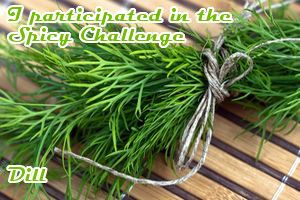
The name turmeric derives from the Latin word terra merita (meritorious earth), referring to the color of ground turmeric, which resembles a mineral pigment. In Sanskrit, turmeric has at least 53 different names, including bhadra (auspicious or lucky), survana (golden color), hridayavilasini (gives delight to heart, charming), jayanti (one that wins over diseases), kaveri (harlot), nishawa (clears darkness and imparts color), patwaluka (perfumed powder), pavitra (holy), ratrimanika (as beautiful as moonlight), vairagi (who remains free from desires), vishagni (killer of poison), and yoshitapriya (beloved of wife). Turmeric has been in use for thousands of years. It was used to worship the sun in ancient India – its golden color most likely the inspiration – and was also worn to ward off evil. Buddhist monks even dyed robes with it. Today, it is still considered sacred and used in various rituals. Hawaiian Kahuna and traditional Vedic homes sprinkle turmeric mixed with seawater to purify the earth around them.
Turmeric has been put to use as a foodstuff, cosmetic, and medicine. It is used as a coloring agent in cheese, butter, and other foods. Turmeric is also used in manufactured food products such as canned beverages, dairy products, baked products, ice cream, yellow cakes, yogurt, orange juice, biscuits, popcorn, sweets, cake icings, cereals, sauces, and gelatins. Turmeric is used as an herbal medicine for rheumatoid arthritis, chronic anterior uveitis, conjunctivitis, skin cancer, small pox, chicken pox, wound healing, urinary tract infections, and liver ailments. It is also used for digestive disorders; to reduce flatus, jaundice, menstrual difficulties, and colic; for abdominal pain and distension; and for dyspeptic conditions including loss of appetite, postprandial feelings of fullness, and liver and gallbladder complaints. It has anti-inflammatory, choleretic, antimicrobial, and carminative actions.
In folk medicine, turmeric has been used in therapeutic preparations over the centuries in different parts of the world. In Pakistan and Afghanistan, turmeric is used to cleanse wounds and stimulate their recovery by applying it on a piece of burnt cloth that is placed over a wound. Indians use turmeric, in addition to its Ayurvedic applications, to purify blood and remedy skin conditions. Turmeric paste is used by women in some parts of India to remove superfluous hair. Turmeric paste is applied to the skin of the bride and groom before marriage in some parts of India, Bangladesh, and Pakistan, where it is believed to make the skin glow and keep harmful bacteria away from the body. Turmeric is currently used in the formulation of several sunscreens. Several multinational companies are involved in making face creams based on turmeric. It was and is used in religious ceremonies and offerings – often representing life, purity, and prosperity.
Peppermint
The name peppermint comes from Greek mythology in the form of a love triangle. As in all Greek mythologies, there are many versions of the story. The most popular one states that Hades seduced the nymph, Minthe, and his wife, Persephone, became enraged with jealousy and turned Minthe into a plant that people would constantly walk on. Outraged by his wife's interference, Hades imbued the plant with peppermint, so whenever the plant was crushed underneath footfalls, it would release a wonderful aroma. Hades hoped that by doing this, people would remember Minthe and recall how beautiful and full of life she had been. Persephone was furious over her husband's tampering, because Minthe's presence would forever linger in the air as a constant reminder of her presence. In another version, Persephone turned Minthe into peppermint (other versions state mint) as a way to save her from Hades's seduction.
The Roman natural philosopher Pliny wrote of mint and of peppermint in particular that it stimulated the appetite stirring "the mind and appetite to a greedy desire of food." He also wrote that mint should be bound into a crown around the head in order to stimulate the mind and the soul. Pliny, Hippocrates, and Aristotle all considered mint to be a discouragement to procreation, saying that it discouraged sexual intercourse. However, the Greeks said that mint encouraged sexual behavior and forbade its consumption by soldiers in order to maintain control. The Romans grew mint and peppermint in their gardens for its medicinal purposes, especially as a digestive aid. They also used mint and peppermint as a ground cover, especially between stepping stone pathways. They enjoyed the pleasing aroma the plants produced that greeted guests as they entered a home or a courtyard.
Mint was so valued in Egypt that it was used as a form of currency. Peppermint was eventually introduced to Europe where it also became a popular culinary and medicinal herb. It was mentioned in the Icelandic Pharmacopoeias as early as 1240 AD as an herbal remedy, and gained in popularity over the next two centuries. Monks in the Middle Ages were known to use peppermint as a tooth polisher and during the same period, cheese makers learned that the strong smell of peppermint would keep rats and mice out of the storeroom. Peppermint appeared as a distinct species in the London Pharmacopoeia in 1721 and was listed as a remedy for treating all manner of ailments from sores, venereal disease, colds and headaches.
Have fun writing!








